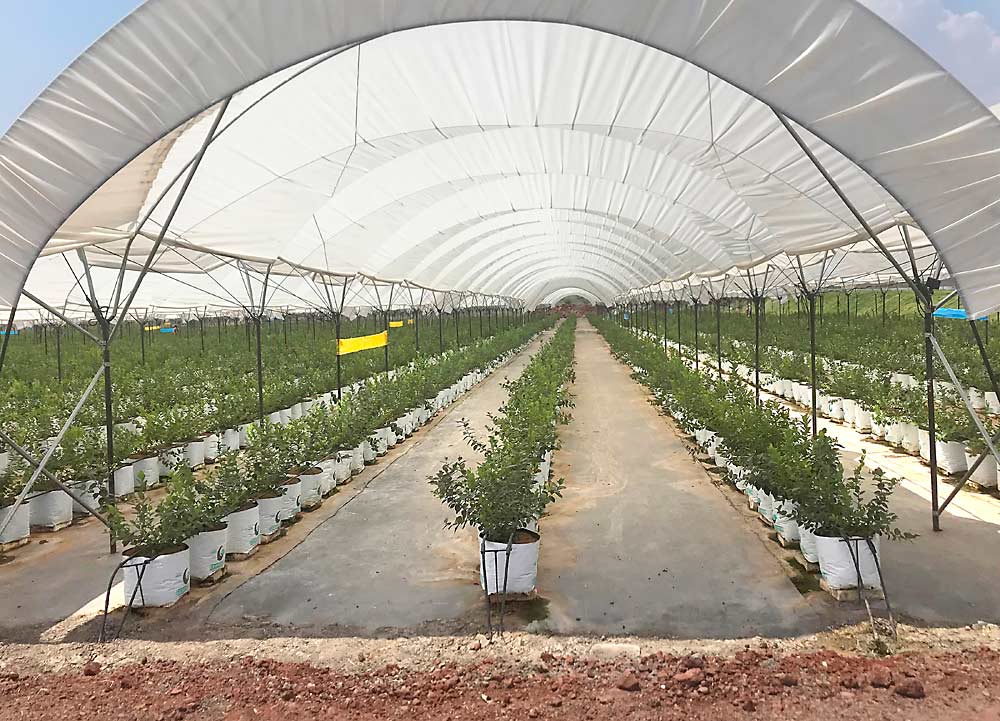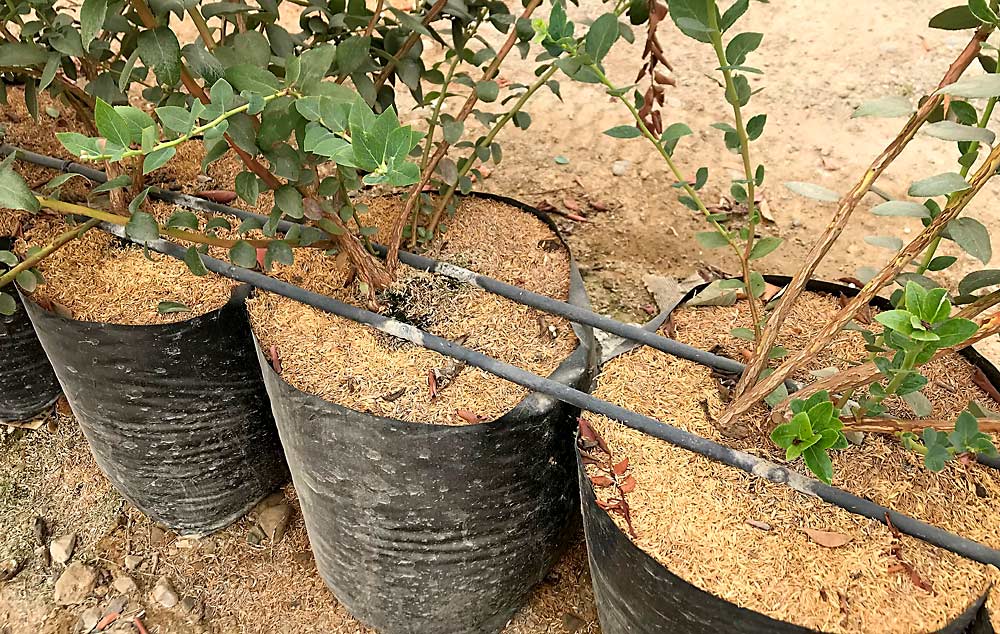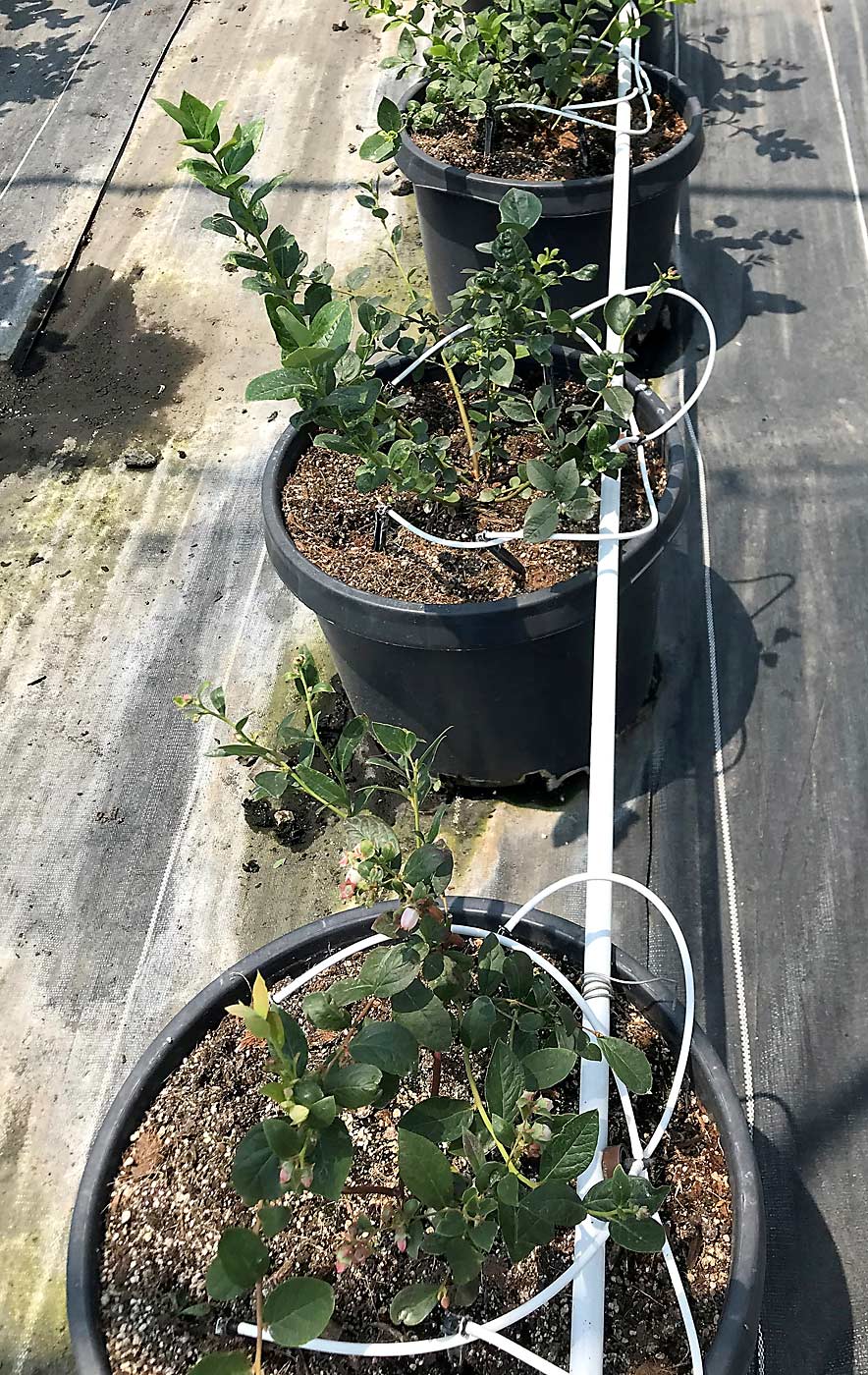
Growers across the globe are increasingly growing blueberry plants in substrates — soil-free media mixtures typically housed in containers. In warmer climates, where southern highbush varieties are grown, the practice is more common.
Yet, the method has barely penetrated U.S. production. Today, traditional open-field production remains the most economically viable option for U.S. blueberry growers, but according to those familiar with substrates, the method could help smaller or more progressive growers find the right sales niche.
“In situations where soil is conducive for blueberry production, substrate production would likely be economically prohibitive unless there was a unique marketing angle the producer is targeting,” said Washington State University small fruit specialist Lisa Wasko DeVetter.
The U.S. industry is showing a spark of interest: Last year, the U.S. Department of Agriculture awarded nearly $100,000 to the Michigan Blueberry Growers, a grower-owned cooperative, to study growing blueberries in substrate-filled containers.
A handful of U.S. growers are testing them, but there are barriers to broader acceptance, said Pablo Segovia, a California-based regional manager for substrate producer Legro USA. Substrates require a bigger investment than open-field growing. They’re often covered by plastic structures. Automated irrigation is a must. Knowledge of hydroponics, nutrients and drainage is essential, he said.

They’re also more labor-intensive, said Dave Bryla, a research horticulturist with the U.S. Department of Agriculture’s Agricultural Research Service in Oregon, who has studied substrates. Training and pruning must be done by hand. Irrigation and nutrient management require a careful balancing act. Substrates don’t hold a lot of water, compared to soil, and need consistent irrigation, but too much water flushes out the nutrients, he said.
Open-field blueberry production is generally cheaper in the United States than it is in some other countries. Part of the reason is that U.S. water, fertilizer and soil fumigant regulations aren’t as strict. But if they become stricter, it might drive more growers to try substrates, Segovia said.
Substrate blends are generally put in pots or bags. Recommended ingredients for blueberry plants include perlite, peat moss and buffered coir. When choosing the right raw materials for a long-term blueberry crop, stability and consistency of physical and chemical properties are key, Segovia said.

Bryla said the most common substrate blends for blueberries include peat and coir. Coir, made from coconut husks, has good water-holding capacity and is readily available. Peat, made of partially broken-down organic matter, is also readily available and naturally low in pH, ideal for acid-loving plants such as blueberries.
Segovia said blueberry plants tend to perform better in substrates and can reach full production in nearly half the time it takes soil-grown plants — two or three years, as opposed to four or five (depending on variety). Plants grown in substrates generate better yields and are easier to hand-pick, because the bushes can be kept short, he said.
There are scenarios where substrate-grown blueberries could fetch higher prices for U.S. growers, which would justify the extra costs: if they’re trying new varieties and want a faster return on investment, for example; or if they’re looking for a unique marketing angle; or if they want to expand their sales windows, which could be especially useful for growers of northern highbush varieties. Northern highbush production is fixed around July and August; berries sold before or after that period tend to be worth more, Segovia said. •
—by Matt Milkovich







Leave A Comment